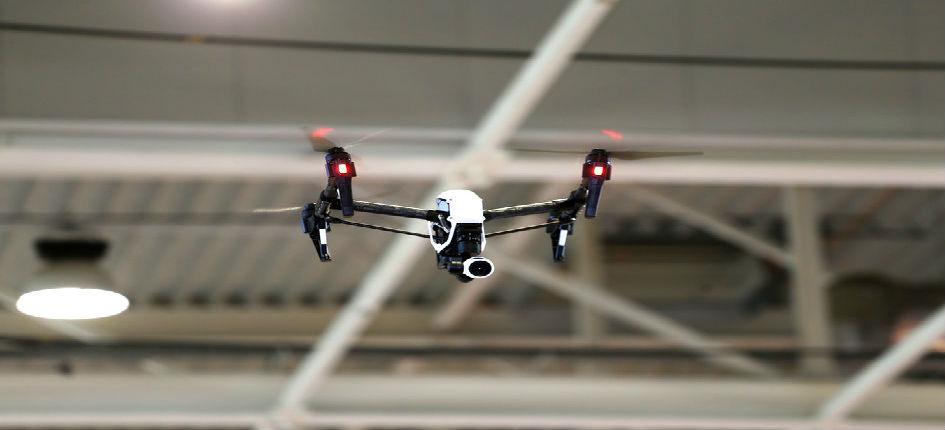Why drones? - Problems in Japan and measures
The labor shortage is one of the most immediate issues for Japan. The direct cause is a decrease of working-age (15-64 years) population: among them, the number of young people has decreased significantly. According to a labor force survey by the Ministry of Internal Affairs and Communications, the population aged 15-24 was decreased by one third in 2017 compared to in 2000. On the other hand, the population over the age of 50 increased by about 10 million (20.51%). In order to solve this issue promptly, the development of automation using AI, robots and drones, etc. is being pushed in the various industries.
Where and how are drones used in Japan?
Drones are presently being used in various sectors and the size of the drone market is increasing year by year as drones can be easily maneuvered at an individual level and are already being implemented in various businesses at an amazing speed due to their convenience. For example, the agriculture industry faces not only a very critical labor shortage but also a lack of successors as Japanese young generation is reluctant to work in the agriculture industry. Drones can be implemented immediately to make up for this without spending time to recruit people or on human resources development.
In sectors such as construction, security services and inspection services, drones save time and, more importantly, they are the safer way of surveying structures, buildings or quarry faces since there is no need to send workers up in a harness or scaffolding to inspect a roof, structure or buildings or no need to put workers into hazardous or dangerous area such as the nuclear power plants in Fukushima. There are many sectors benefiting from the use of drones.
Here are some closer details on the status of several sectors, where drones are implemented:
Agriculture: In Japan, the drone business is being used in the agricultural field. It is an unmanned helicopter type drone and boasts sales of 200-300 units a year. Currently, drones are used for pesticide spraying, geological analysis of paddy fields, crop growth management, and other practical applications to reduce labor and increase crop yield.
Logistics: In Japan, regulations on flying in the range, where the drone cannot be seen by eye and flying over third-party / private ground are being promoted to realize package delivery by drone. In addition, Amazon has completed a test flight of the "Prime Air" drone delivery service for cost reduction and quicker delivery.
There are, however, still many issues to be dealt with, such as improvement of flight time, theft, and response in bad weather, but practical application at the technical level is a steadily evolving in this field.
In addition to parcel delivery, and without doubt, drones will be applied for medicine delivery service for remote areas. Depopulation as well as the aging of the population are progressing in suburbs and telemedicine is therefore getting more and more important. Drone delivery service of medicine will be put sooner or later in operation as drone makes it faster, easier and affordable to operate in places that are hard to reach.
Monitoring: Secom, one of the major Japanese security companies, started commercializing the surveillance drone “SECOM drone” in 2015. It captures people and vehicles that have entered a specific site with a laser sensor, approaches the target by autonomous flight, and photographs the license plate and face from an optimal angle.
These drones have become extremely useful, as information such as license plates that could not be captured by conventional surveillance cameras can be transmitted more accurately and with high efficiency. The practical application for monitoring is gaining increasing popularity upon the success of an experiment in 2017, where a “patrol monitoring service” for large-scale facilities was tested.
Inspection and maintenance: drones should and can play an active role in terms of safely inspecting otherwise dangerous locations. Important but dangerous places such as bridges and electrical equipment can be safely inspected by using drones. This also improves work efficiency.
Contamination Inspection: Drones will be very useful in places where it is difficult or hazardous for humans to enter, such as nuclear power plants. In disaster regions, they can be used to get an overall picture of the extent of damage to property and infrastructure, find people and help with the decision to allocate resources. Contamination inspection using drones loaded with inspection equipment are already in use.
Location Survey: Currently, the demand for drone utilization is increasing in the surveying field. This is a vast area where drones are presently being used across multiple sectors. Drones are terrific for getting an overview and close ups of buildings and structures. Drones are also a safer method of inspecting tall structures. No need to send men up in a harness or scaffolding to inspect a roof, structure or building. It enables the users to conduct and complete surveys at a way lower cost, compared to the conventional method with laser and aerial surveys. With the current performance, it is possible to take images with a sufficient amount of information to convert to 3D data and it is expected, that the demand for drone surveying will increase further as a fundamental tool in the industry.
The current drone regulations in Japan
According to Japan’s national aviation authority, the Japan Civil Aviation bureau (JCAB), flying a drone is legal in Japan. The drone regulation began with a 2015 amendment to the Aviation Law, which established areas and flight rules for drones as aircraft over 200 grams.
Before flying a drone in Japan, you must request approval by submitting an application for permission to the Ministry of Land, Infrastructure, Transport and Tourism at least 10 business days prior to the proposed operation.
The following is the regulation on drones in Japan in brief:
Limitations: Drones may not:
- fly over densely populated areas or areas surrounding an airport without permission from the Minister of Land, Infrastructure and Transportation
- fly during nighttime
- fly UAV’s (unmanned aerial vehicle) in unrestricted areas across the country above 150 meters (492 feet), and fly closer than 30 meters (98.4 feet) to people, buildings, and vehicles
- be flown over crowds or sites where large groups of people are gathered, such as concerts or sports events
- be used to transport any hazardous items
- drop objects while in flight, either intentionally or accidentally
Also, drone pilots must maintain a visual line of sight with their drone during operations.
In effect, there is no single law that regulates drones in Japan: the main regulation is done by the above-mentioned Aviation Law and Small Unmanned Aerial Vehicles etc. Flight Prohibition Law. In addition these, various laws such as the Radio Law and local government regulations apply.
In May 2019, the law regarding drone regulations was revised. The following three laws have been revised regarding drone regulations:
- Civil Aeronautics Act, Unmanned Aircraft (UA) Flight Prohibition Law
- Rugby World Cup (2019) Special Measures Law (Rugby Special Measures Law)
- Special Measures Law for Tokyo Olympic Games and Tokyo Paralympic Games in 2020 (Special Measures Law)
The purpose is to prevent danger, maintain the foundation of Japan’s self-defense infrastructure and also facilitate the preparation and operation of events. Further, the goal is to prevent dangers to the safety of athletes, spectators and related parties.
And there are two important points of this revision of the regulations.
- Defense-related facilities designated by the Minister of Defense are added to the flight-banned facilities stipulated in the Flying Prohibition Act, regulating small drones.
- Part of the Rugby Special Measures Law and the Olympic and Paralympic Special Measures Law have been amended to prohibit the flight of small unmanned aircraft, etc. over the relevant facilities of the Rugby World Cup 2019 and 2020 Tokyo Olympic and Paralympic Games.
Since new laws are being considered, especially by prefectural governments, please consult relevant organizations.
In addition to present uses for drones as well as new drone uses which are still in the experimental and research stages, without doubt, hundreds of new uses for drones will be developed in the coming years. Based on the information we obtained as well as the recent revision, in the opinion of Swiss Business Hub Japan, there is a big potential for Swiss SMEs which produce drones equipped with high-sensitivity sensors or drones which are more robust compared to conventional ones and can carry heavy items safely.



